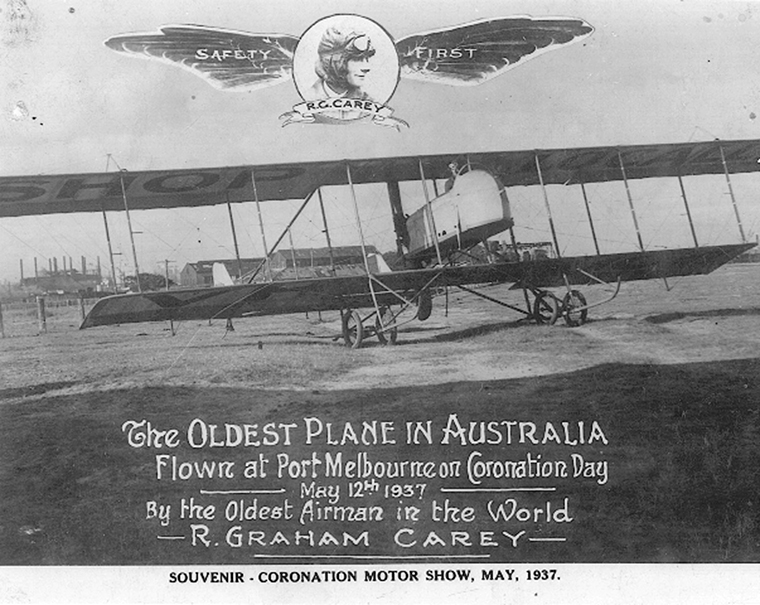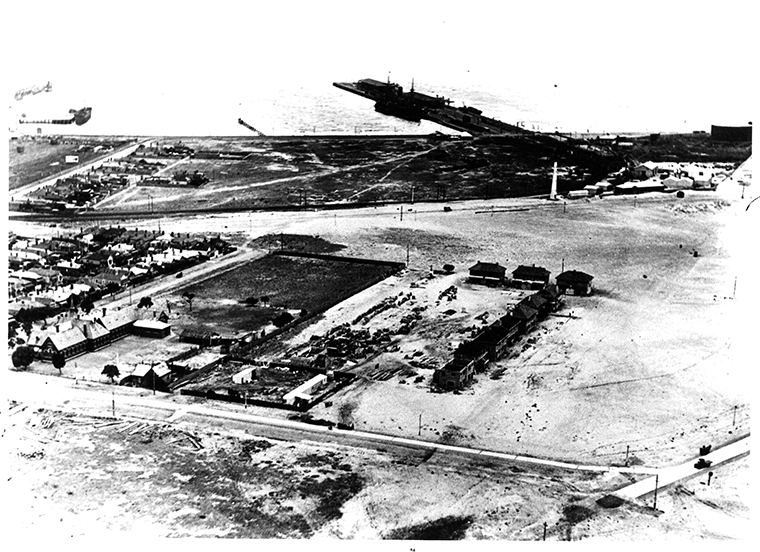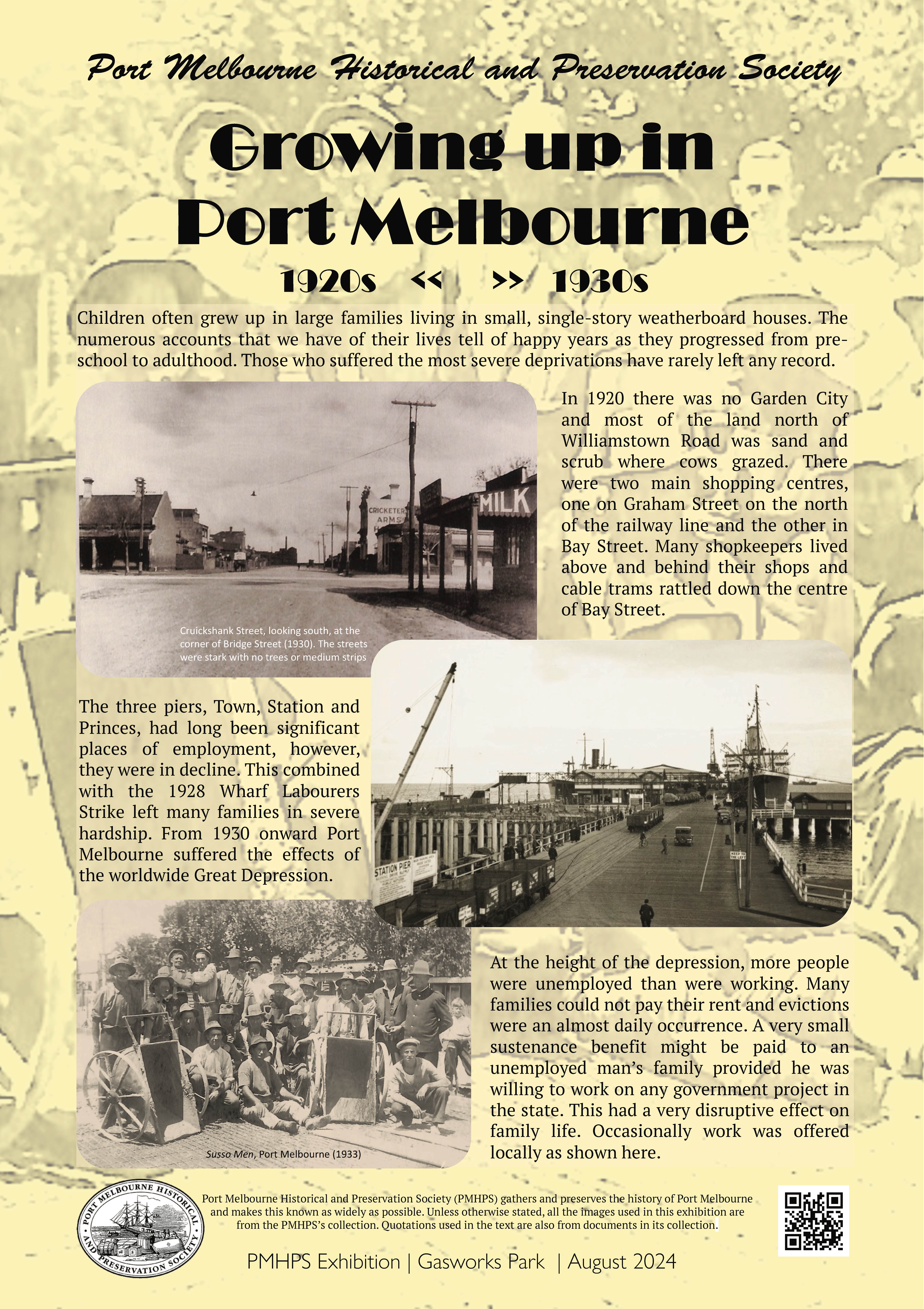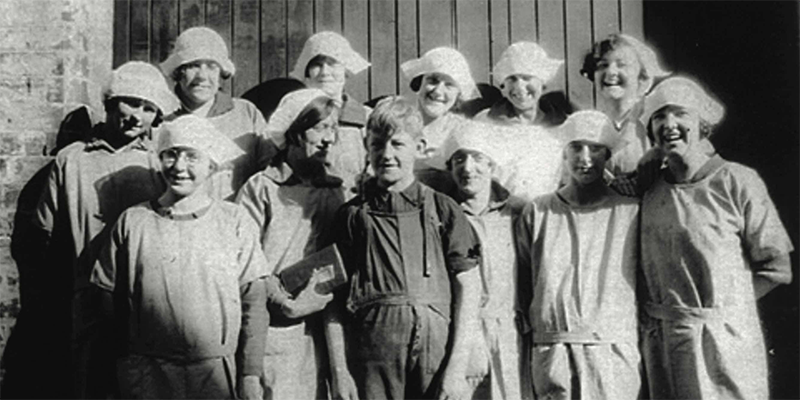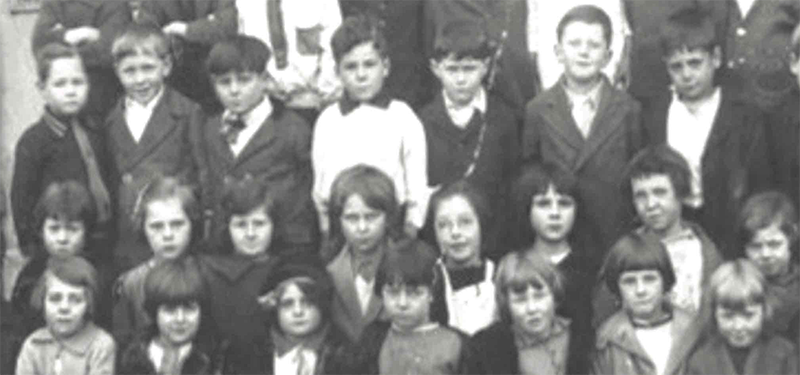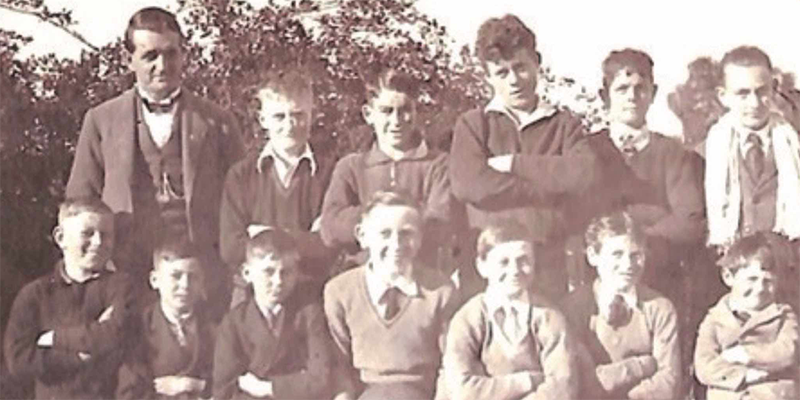Growing up in Port Melbourne – Port Melbourne 1920 – 1940
In 1920, as Australians emerged from the events of the First World War and the Spanish Flu epidemic, many people were ready to settle down to life as it had been before either of these traumas, yet here in Port Melbourne the people and their suburb were actually entering a period of transformation.
Until 1920 most industry and housing was on the south side of Williamstown Road, the area of Fisherman’s Bend was largely undulating sand dunes covered with grass and scrub where people were licenced to graze cows, where there was also a golf course, a rifle range and a scattering of noxious industries. In 1920 the first sign of the massive changes that transformed the Bend was the opening of Maurice Falman’s airfield at the river end of Graham Street, eventually there were four airfields on the Bend.
Port Melbourne: Was it a ‘Working Class Suburb’?
This is a term often applied the inner suburbs of Melbourne, yet up to 1920 Port Melbourne probably had much the same income range among its families as most suburbs. People who ran small businesses often lived on the premises and most shops were built with a residence behind and above them. Business people built substantial houses like Guernsey House, MacLaughlin Terrace and Dover House, appreciating the convenience of living near their place of work at a time when there were no motor vehicles to provide a quicker alternative to trains or cable trams. This changed with the opening of new land developments in other suburbs. By 1930, Melbourne suburbs were more stratified making the description of Port Melbourne as ‘working class’ more accurate.
The Shipping Industry
The shipping industry had been undergoing radical change for some time with larger ships and the increasing mechanisation of the loading and unloading of cargo. In Port Melbourne this meant that fewer men were employed on the ships and wharves. The three piers in Port Melbourne had become less significant with the development of modern facilities on the river docks especially Victoria Harbour.
1928 Dock Strike
There were still many families dependent on jobs in the shipping industry when the federal government proposed a new set of conditions, the 1928 Beeby Award, for wharf labourers reducing wages and giving stevedoring companies more favourable terms. A national Waterside Workers Strike began. This 1928 strike cut deeply into the Port Melbourne community and left an enduring bitterness and division in the community. Deprived of an income, many were unable to pay their rent and were evicted, the McCleavey family for example moved seven times and ended up living at the back of the Port Melbourne Stevedores premises in Bay Street. Food was often in short supply and the local pawnbrokers were one business that thrived on the desperation. Finally on November 2nd the police fired on unarmed strikers seriously wounding several of them, one of whom, Allan Whittaker, later died of his wound.
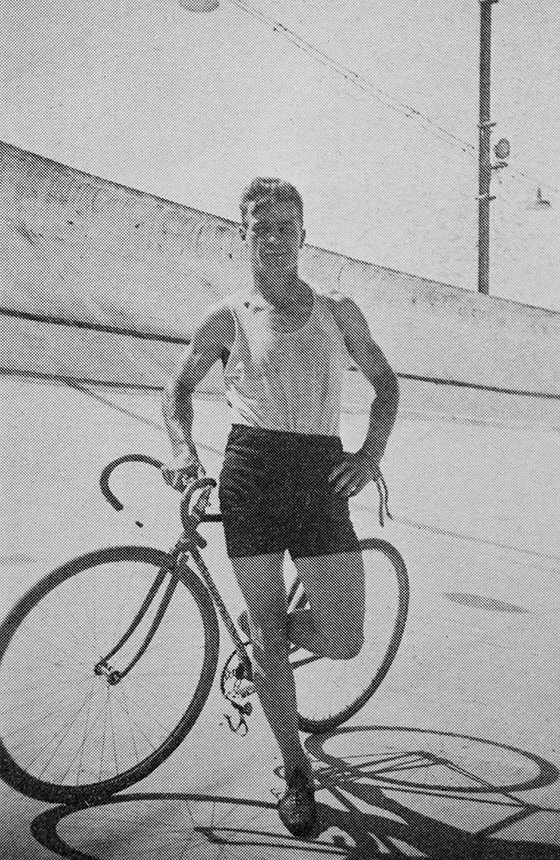
The 1929 collapse of the Wall Street Stock Exchange heralded the period often known as the Great Depression, an event that saw unemployment rise dramatically, including in Australia. In Port Melbourne it is often said that more men were unemployed than were in employment, and this was probably true. There was very little financial assistance for the unemployed, in order to receive the ‘susso’ payment men had to agree to go wherever the government sent them. This meant that a man might be months away from home working on such projects as drainage of the Koo-Wee-Rup Swamp, construction of the Great Ocean Road or the Horsham railway. The general community offered help in various ways: the butcher in Bridge Street used to offer free soup to families in need; the Holy Trinity mother’s group provided penny lunches to the children at Nott Street School and the Mother’s Club provided cocoa for children arriving at school without breakfast. In spite of the new industries that were being set up on the Bend, only at the end of the 1930s did conditions return to normal.
The plans to develop new housing estates came to fruition. The State Savings Bank commenced construction on Fisherman’s Bend in 1926 of what we now know as Garden City, aiming to provide affordable housing.
Locally organised activities dominated recreational activities and entertainment. Although there was radio, most music was made by local bands, by a family member playing an instrument or by friends and family coming into the house to sing around the piano. Most of the local churches had large choirs and young people usually provided a high proportion of members of these choirs, after all it was a great way to meet and it was free.
There were annual events that involved large groups of local people organising the popular entertainments of picnics like the one that commenced in 1933 for children of unemployed parents but quickly transformed into an open event for any family. On the day of these Port Melbourne Community Picnics all the primary schools closed as did many of the shops. Several thousand people attended, each family bringing their own food and all ages participating in races and games of various sorts. The Garden City Progress Association organised a picnic at Warrandyte as early as February 1929.
The exhibition explores the following seven themes to to build up a picture of what life was like for children and teenagers in the period between the two world wars in Port Melbourne: Housing, Family, Schooling, Community, Leisure, Sport and Work.
Acknowledgements
All photos are from the collection of the Port Melbourne Historical and Preservation Society unless otherwise indicated; likewise the quotations are from documents lodged with the society. If you would like more detail about a particular image or quote please email us on pmhps@pmhps.org.au.
Further Reading
The Borough and its People, M & G L Bride; Port Melbourne Historical and Preservation Society
They Can Carry Me Out, Pat Grainger (Editor); Port Melbourne Historical and Preservation Society

